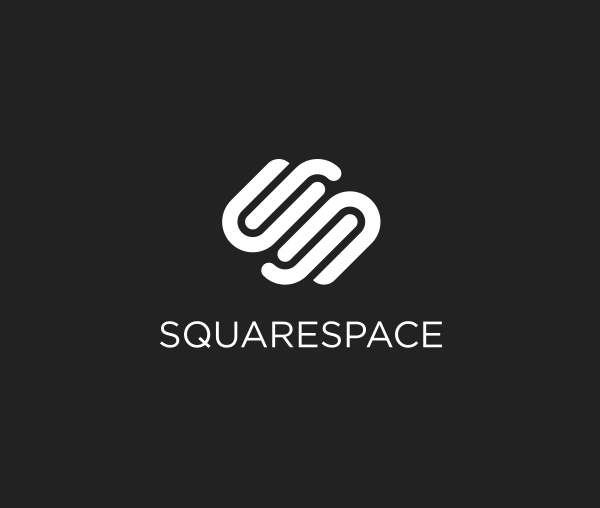Canon has announced new DSLRS - with Dual Pixel AF
 https://www.youtube.com/watch?v=bpERpJG7VDYAnd an updated mirrorless camera! SO Canon just announced - a Canon T7i (800D), a 77D (9000D) and the M6 (mirrorless camera) - If you are trying to figure out where the new 77D fits in the line up you are not alone - I have had a handful of confused readers write in over the last week, based on our post about the leaked specs, asking what the Canon 77D offers vs the Canon 80D. I have a quick comparison below but briefly the 77D is the successor to the T6s and the T7i is the successor to the Canon T6i. Canon will continue to offer the T6i making their line of Rebels quite large with a T5, T6, Sl1, T5i, T6i, T6s, T7i, 70D, 77D, 80D ALL still being offered/sold.. That's quite the lineup. The big headline - DUAL PIXEL AF is in the new cameras!! That is the fast and smooth AF during live view - immensely helpful for video and makes using live view a much more pleasant experience. Additionally Canon has shrunk the T7i a bit more, this makes me think we will not see a SL2 anytime soon.A quick comparison of the two new DSLRS the T7i and the 77D with the older T6i/T6s and the 80D. below the chart I have a few more differences between the 77D and the T7i and some recommendations about which you might want to buy.
https://www.youtube.com/watch?v=bpERpJG7VDYAnd an updated mirrorless camera! SO Canon just announced - a Canon T7i (800D), a 77D (9000D) and the M6 (mirrorless camera) - If you are trying to figure out where the new 77D fits in the line up you are not alone - I have had a handful of confused readers write in over the last week, based on our post about the leaked specs, asking what the Canon 77D offers vs the Canon 80D. I have a quick comparison below but briefly the 77D is the successor to the T6s and the T7i is the successor to the Canon T6i. Canon will continue to offer the T6i making their line of Rebels quite large with a T5, T6, Sl1, T5i, T6i, T6s, T7i, 70D, 77D, 80D ALL still being offered/sold.. That's quite the lineup. The big headline - DUAL PIXEL AF is in the new cameras!! That is the fast and smooth AF during live view - immensely helpful for video and makes using live view a much more pleasant experience. Additionally Canon has shrunk the T7i a bit more, this makes me think we will not see a SL2 anytime soon.A quick comparison of the two new DSLRS the T7i and the 77D with the older T6i/T6s and the 80D. below the chart I have a few more differences between the 77D and the T7i and some recommendations about which you might want to buy.
| Spec |
Canon 80D |
Canon T6s/T6i (750/760D) |
Canon T7i (800D) |
Canon 77D (9000D) |
| MP |
24 |
24 |
24 |
24 |
| ISO |
100-16,000 |
100-12,800 |
100-25600 (expands to 51200) |
100-25600 (expands to 51200) |
| Processor |
Digic 6 |
Digic 6 |
Digic 7 |
Digic 7 |
| Number of AF pts |
45 (all cross type) |
19(all cross type) |
45 (all cross type) |
45 (all cross type) |
| Viewfinder |
100% pentaprism |
95% pentamirror |
95% pentamirror |
95% pentamirror |
| Live View AF speed |
Excellent |
Good |
Excellent |
Excellent |
| Top Shutter Speed |
1/8000 |
1/4000 |
1/4000 |
1/4000 |
| Flash Sync Speed |
1/250 |
1/200 |
1/200 |
1/200 |
| FPS |
7 (live view 5 with AF) |
5 (live ~1 with AF) |
6 |
6 |
| Low Light focusing |
-3 EV (very good) |
-0.5 (ok) |
-3 EV (very good) |
-3 EV (very good) |
| Video |
1080p60 |
1080p30 |
1080p60 |
1080p60 |
| Headphone Jack |
Yes |
No |
No |
No |
| Mic Jack |
Yes |
Yes |
Yes |
Yes |
| Connectivity |
WIFI/NFC |
WIFI/NFC |
WIFI/NFC/Bluetooth |
WIFI/NFC/Bluetooth |
| Battery Life |
960 shots |
440 shots |
600 Shots |
600 shots |
| Weight |
730g (1.61 lb / 25.75 oz) |
565 g (1.25 lb / 19.93 oz) |
532 g (1.17 lb / 18.77 oz) |
540 g (1.19 lb / 19.05 oz) |
| Current Price |
$1499 with 18-135 | $1099 Body |
$1049 T6s with 18-135 | $849 Body |
$1299 with 18-135 |$749 Body |
$1499 with 18-135 | $899 Body |
What's new?
The T7i/77D now offer Dual Pixel AF, much improved low light AF performance and 45 cross-type AF points, Digic 7 processors which should provide slightly better low light/high ISO performance, Bluetooth and a new battery providing better battery life over the T6s/T6i models. And a video time-lapse mode. And this is all in a slightly smaller, slightly lighter body.
The Canon 77D offers the same performance and sensor as the T7i
So what is different? Like the T6i/T6s cameras the difference is mostly in the body with the 77D offering a very slightly larger body that offers a top LCD screen, a rear dial, lock switch and an eye sensor used to turn off the LCD when you bring your eye up to the viewfinder. They both use the same NEW battery. Canon 77D(left) vs Canon T7i(right) top view
Canon 77D(left) vs Canon T7i(right) top view
Canon T7i (800D) vs Canon 77D (9000D)
This is easy - If you are considering these cameras I expect you want to shoot manually and the 77D with the rear dial and top LCD screen make this a more manual friendly camera. I talk more about this in my T6s review If you are on a strict budget the T7i saves you some money that you could use to buy the 50mm f/1.8 STM lens
Canon 77D vs 80D
This is a tougher decision. The real strengths of the 80D - bigger battery providing almost 1,000 shots per charge, weather sealing and a significantly faster top shutter speed at 1/8000 of a second along with a headphone jack make this a more professionally capable camera for photographers and videographers. If you are a casual photographer the 77D offers savings and a camera the will provide more than enough power for you. If you plan to become more serious about your photography or videography the 80D offers just that much more room to grow that I do recommend purchasing.
About that Mirrorless Camera the M6
it is NOT replacing the M5, this will be an additional model alongside the M5. The improvement between the two will be the M6 includes stabilization for video and they have removed the EVF - providing an optional EVF you can attach in the hotshoe. This makes the camera a little more compact but in my opinion a lot less desirable. I want an EVF on ALL my cameras - otherwise bright sunny conditions make it very hard to see what's happening on the back of the LCD. (more soon)
Other interesting bits-
These new cameras now offer Bluetooth LE for additional connectivity options and Canon is releasing a Bluetooth wireless remote. The BR-E1, price $50, is capable of triggering the camera up to 16 feet. It can also control that lens zoom, PZ-E1, that was released with the 80D.
T7i
Available to pre-order through 
|
 |
77D
Available to pre-order through 
|
 |
18-55mm F/4-5.6IS STM lens
Available to pre-order through 
|
 |
BR-E1 WirelessRemote Control
Available to pre-order through 
|
 |
 I picked up the Canon 40mm f/2.8 on a whim before traveling to Europe last year. My husband and I were both bringing DSLR cameras, and I wanted us to have the flexibility to shoot with versatile prime lenses at the same time. While we didn't shoot with primes much on the trip (if you've been part of a large travel group, you know how it goes), I've been shooting with it quite a bit since then. I cannot even believe how much I love the 40mm lens. With a few exceptions (such as when I'm doing macro photography), the 40mm is my standard lens now.I know that the Canon 50mm f/1.8 or "Nifty Fifty" is most people's top pick for an all-around go-to prime lens. It was my go-to prime lens for many years, too. After shooting with the 40mm extensively for almost a year now, I can't believe how much better it is than the 50mm f/1.8. For the slight price difference, it seems like a no-brainer to pick up the 40mm.There are a few key reasons I think the Canon 40mm f/2.8 is a better lens than the Canon 50mm f/1.8.
I picked up the Canon 40mm f/2.8 on a whim before traveling to Europe last year. My husband and I were both bringing DSLR cameras, and I wanted us to have the flexibility to shoot with versatile prime lenses at the same time. While we didn't shoot with primes much on the trip (if you've been part of a large travel group, you know how it goes), I've been shooting with it quite a bit since then. I cannot even believe how much I love the 40mm lens. With a few exceptions (such as when I'm doing macro photography), the 40mm is my standard lens now.I know that the Canon 50mm f/1.8 or "Nifty Fifty" is most people's top pick for an all-around go-to prime lens. It was my go-to prime lens for many years, too. After shooting with the 40mm extensively for almost a year now, I can't believe how much better it is than the 50mm f/1.8. For the slight price difference, it seems like a no-brainer to pick up the 40mm.There are a few key reasons I think the Canon 40mm f/2.8 is a better lens than the Canon 50mm f/1.8.




















 Learn more about the Tokina 11-16 vs the Canon 10-18 and Canon 10-22
Learn more about the Tokina 11-16 vs the Canon 10-18 and Canon 10-22 Learn more about the more expensive full frame wide angle lens options- Canon 16-35, Tamron 15-30
Learn more about the more expensive full frame wide angle lens options- Canon 16-35, Tamron 15-30



 After a little more than four years of shooting exclusively with the Canon t4i, I upgraded to the Canon 80D. The Canon t4i was my entry into the world of DSLR photography and leaving it behind was a little bittersweet. I put my t4i through its paces shooting more than 40,000 images in light levels ranging from harsh sunlight to golden hour to low light in jazz clubs. My photography has included, but isn't limited to, cityscapes, landscapes, jewelry, pets, and food. The Canon Rebel line is well-built with intuitive menus, making it a great option for anyone just starting out with DSLR photography.When you're thinking about upgrading to a new camera body, the question is always will the upgrade really be worth it? Upgrading from a Canon t4i or older Rebel body to the Canon 80D is definitely worth it. Personally, the top four features I appreciate most with the upgrade are as follows:
After a little more than four years of shooting exclusively with the Canon t4i, I upgraded to the Canon 80D. The Canon t4i was my entry into the world of DSLR photography and leaving it behind was a little bittersweet. I put my t4i through its paces shooting more than 40,000 images in light levels ranging from harsh sunlight to golden hour to low light in jazz clubs. My photography has included, but isn't limited to, cityscapes, landscapes, jewelry, pets, and food. The Canon Rebel line is well-built with intuitive menus, making it a great option for anyone just starting out with DSLR photography.When you're thinking about upgrading to a new camera body, the question is always will the upgrade really be worth it? Upgrading from a Canon t4i or older Rebel body to the Canon 80D is definitely worth it. Personally, the top four features I appreciate most with the upgrade are as follows:


 As Toby has said before having an articulating LCD is a must with today's cameras. Beyond just selfies the variable angles allow you to get shots that otherwise would be more than a bit difficult. Out of all the things for the 6DMII this was the one make it or break it item for many photographers I've talked to recently. Unfortunately playing devil's advocate though this does have its drawbacks. It's yet to be known how this affects the standard waterproofing found in Canon's higher end cameras. For those looking for a rugged full-frame camera, this might be an issue as well as adding another breaking point for their gear.With this leak is somewhat confirmed it's an interesting development and we'll find out shortly in the official announcements. As of this point with the SKU number's we should be seeing three different kit options and the 6DMII available as body only as well.Overall it's an exciting change as I expected it to go without the articulating LCD, we'll have more information out come July.Updated additional specs leaked (
As Toby has said before having an articulating LCD is a must with today's cameras. Beyond just selfies the variable angles allow you to get shots that otherwise would be more than a bit difficult. Out of all the things for the 6DMII this was the one make it or break it item for many photographers I've talked to recently. Unfortunately playing devil's advocate though this does have its drawbacks. It's yet to be known how this affects the standard waterproofing found in Canon's higher end cameras. For those looking for a rugged full-frame camera, this might be an issue as well as adding another breaking point for their gear.With this leak is somewhat confirmed it's an interesting development and we'll find out shortly in the official announcements. As of this point with the SKU number's we should be seeing three different kit options and the 6DMII available as body only as well.Overall it's an exciting change as I expected it to go without the articulating LCD, we'll have more information out come July.Updated additional specs leaked (
 DSLR and mirrorless cameras and lenses are expensive. You want to buy great gear, but you don't want to break the bank. Buying used camera equipment allows you save money without compromising quality. However, it's important to be careful when purchasing used camera bodies and lenses. Before you load up your shopping cart and check out, take some time to familiarize yourself with the process of shopping for used gear online. Following a few key tips ensures you'll get a good deal on high-quality equipment and that if you don't, you'll be able to return it and get a refund.I got inspired to write about this topic after I saved $300 on a near perfect condition copy of the
DSLR and mirrorless cameras and lenses are expensive. You want to buy great gear, but you don't want to break the bank. Buying used camera equipment allows you save money without compromising quality. However, it's important to be careful when purchasing used camera bodies and lenses. Before you load up your shopping cart and check out, take some time to familiarize yourself with the process of shopping for used gear online. Following a few key tips ensures you'll get a good deal on high-quality equipment and that if you don't, you'll be able to return it and get a refund.I got inspired to write about this topic after I saved $300 on a near perfect condition copy of the  With the Nikon D5600 now available for the US and Canon T7i available for pre-order it's that time again for a bit of a comparison. At one point, Nikon had put on a good showing with the D5300 leading the market for photography while our video recommendation had been going to the Canon T5i. Since then Nikon camera's have been stagnating under minor updates while the T7i got a decent upgrade in processing, sensor, connectivity, and focus certainly pushing it closer to the top of our list.
With the Nikon D5600 now available for the US and Canon T7i available for pre-order it's that time again for a bit of a comparison. At one point, Nikon had put on a good showing with the D5300 leading the market for photography while our video recommendation had been going to the Canon T5i. Since then Nikon camera's have been stagnating under minor updates while the T7i got a decent upgrade in processing, sensor, connectivity, and focus certainly pushing it closer to the top of our list.









 A new year and new Canons to match with the newly announced Canon T7i (800D) and 77D (9000D). Odd's are you're wondering a bit where the 77D fits in, both Toby and I have been asked a lot this week. On paper, it's a replacement to the T6S as a bridge camera between the entry level T7i and 80D. While making the product line and obscure Canon naming just slightly harder it makes things a bit more drawn out with the bare bones budget T6, the new entry level T7i for beginners, the 77D making a step up with video, then going to the 80D as a truly semi-pro platform.
A new year and new Canons to match with the newly announced Canon T7i (800D) and 77D (9000D). Odd's are you're wondering a bit where the 77D fits in, both Toby and I have been asked a lot this week. On paper, it's a replacement to the T6S as a bridge camera between the entry level T7i and 80D. While making the product line and obscure Canon naming just slightly harder it makes things a bit more drawn out with the bare bones budget T6, the new entry level T7i for beginners, the 77D making a step up with video, then going to the 80D as a truly semi-pro platform.







 https://www.youtube.com/watch?v=bpERpJG7VDYAnd an updated mirrorless camera! SO Canon just announced - a Canon T7i (800D), a 77D (9000D) and the M6 (mirrorless camera) - If you are trying to figure out where the new 77D fits in the line up you are not alone - I have had a handful of confused readers write in over the last week, based on our post about the leaked specs, asking what the Canon 77D offers vs the Canon 80D. I have a quick comparison below but briefly the 77D is the successor to the T6s and the T7i is the successor to the Canon T6i. Canon will continue to offer the T6i making their line of Rebels quite large with a T5, T6, Sl1, T5i, T6i, T6s, T7i, 70D, 77D, 80D ALL still being offered/sold.. That's quite the lineup. The big headline - DUAL PIXEL AF is in the new cameras!! That is the fast and smooth AF during live view - immensely helpful for video and makes using live view a much more pleasant experience. Additionally Canon has shrunk the T7i a bit more, this makes me think we will not see a SL2 anytime soon.A quick comparison of the two new DSLRS the T7i and the 77D with the older T6i/T6s and the 80D. below the chart I have a few more differences between the 77D and the T7i and some recommendations about which you might want to buy.
https://www.youtube.com/watch?v=bpERpJG7VDYAnd an updated mirrorless camera! SO Canon just announced - a Canon T7i (800D), a 77D (9000D) and the M6 (mirrorless camera) - If you are trying to figure out where the new 77D fits in the line up you are not alone - I have had a handful of confused readers write in over the last week, based on our post about the leaked specs, asking what the Canon 77D offers vs the Canon 80D. I have a quick comparison below but briefly the 77D is the successor to the T6s and the T7i is the successor to the Canon T6i. Canon will continue to offer the T6i making their line of Rebels quite large with a T5, T6, Sl1, T5i, T6i, T6s, T7i, 70D, 77D, 80D ALL still being offered/sold.. That's quite the lineup. The big headline - DUAL PIXEL AF is in the new cameras!! That is the fast and smooth AF during live view - immensely helpful for video and makes using live view a much more pleasant experience. Additionally Canon has shrunk the T7i a bit more, this makes me think we will not see a SL2 anytime soon.A quick comparison of the two new DSLRS the T7i and the 77D with the older T6i/T6s and the 80D. below the chart I have a few more differences between the 77D and the T7i and some recommendations about which you might want to buy.
 Canon 77D(left) vs Canon T7i(right) top view
Canon 77D(left) vs Canon T7i(right) top view







